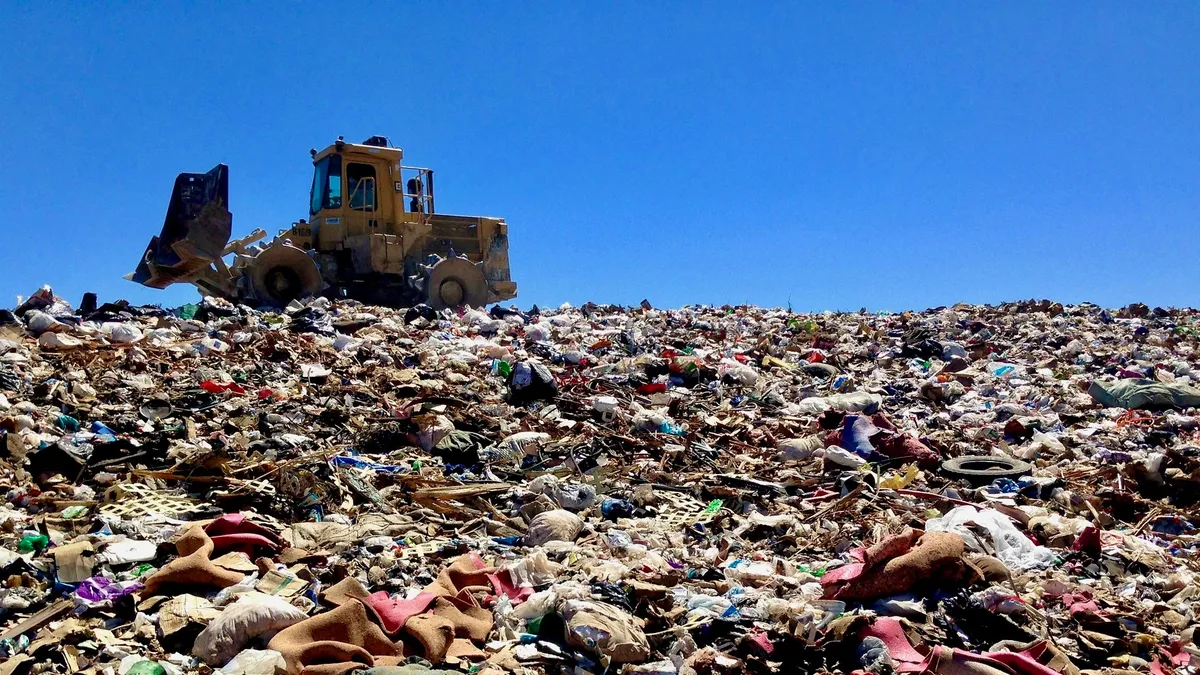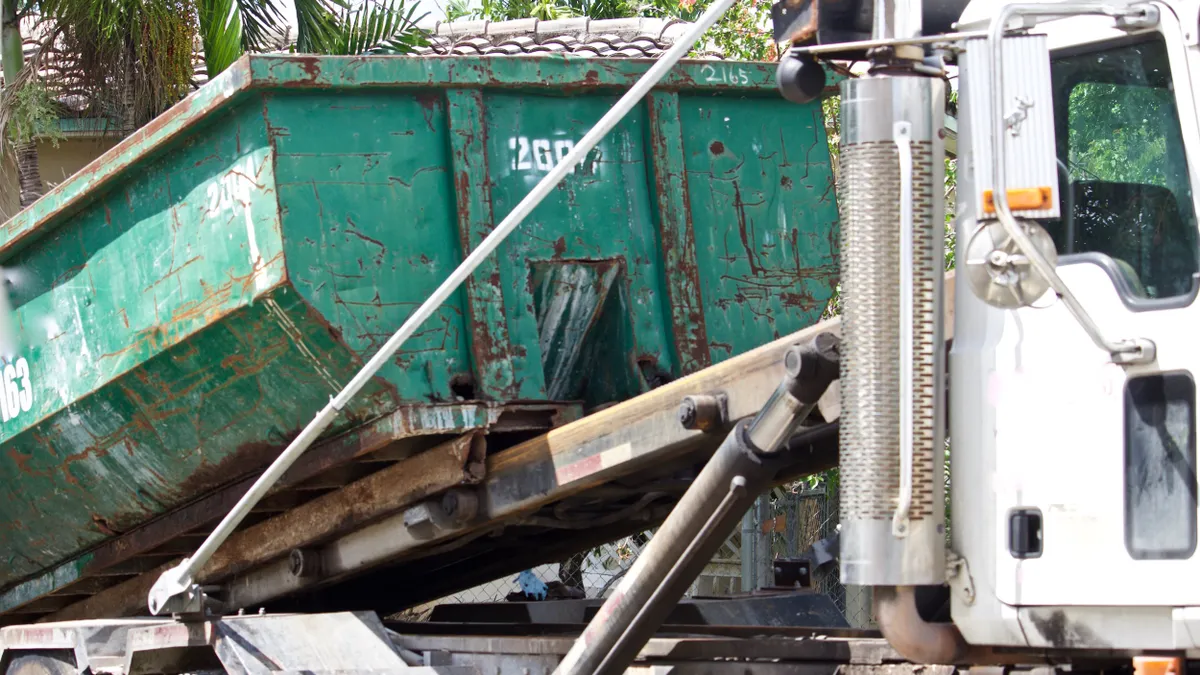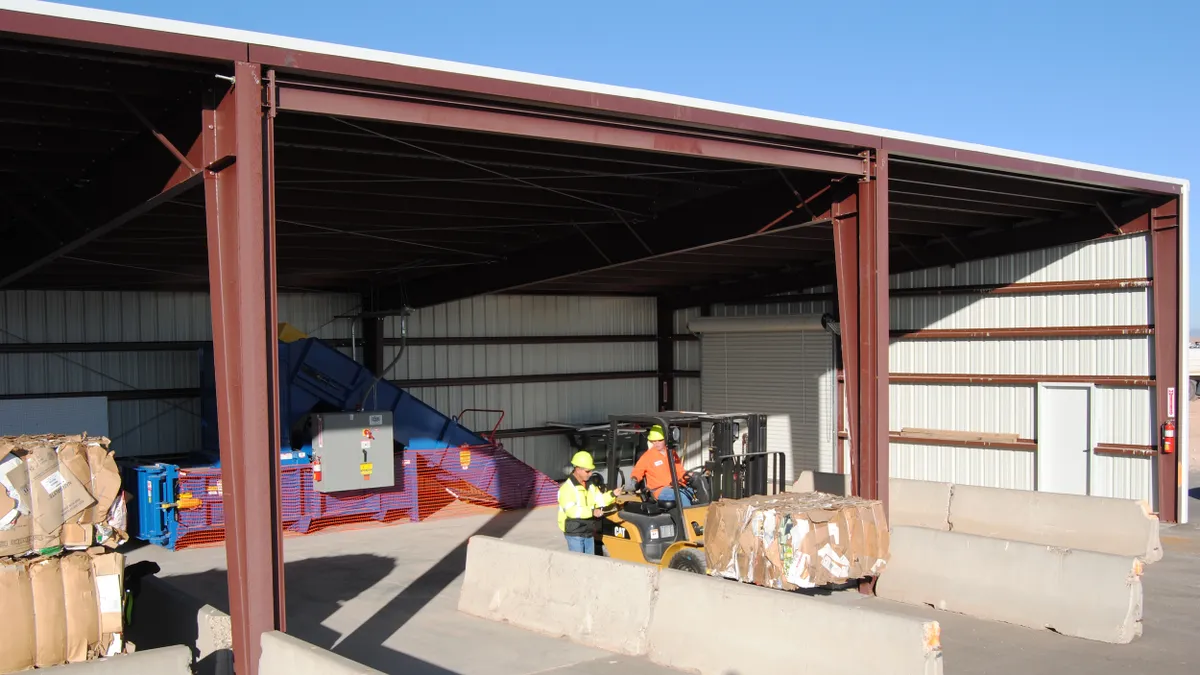Dive Brief:
- Injury and illnesses increased to a rate of 4.9 incidents per 100 full-time employees for solid waste landfill workers in 2019, according to the Bureau of Labor Statistics (BLS), up from 3.9 in 2018.
- The incidence rate for waste collection workers stayed steady at 5.5 across both years, declining slightly from 5.9 to 5.8 for solid waste collection workers specifically. Solid waste collection workers were also noted as having some of the highest rates of any occupation for incidents leading to "days away from work, restricted work activity, or job transfer" at 4.4.
- Rates for MRF workers declined from 4.9 to 3.6 between 2018 and 2019, following a notable spike in 2017. Rates for the "solid waste combustors and incinerators" category, historically among the industry's lowest, were not available like last year due to limited data.
Dive Insight:
Like the year before, BLS data showed a total of 2.8 million non-fatal injuries and illnesses reported by employers in 2019 across all sectors. The incidence rate for these events in the overall waste management and remediation services category also stayed flat at 4.2, as compared to the overall private sector rate across all industries of 2.8.
The lack of notable change in the incidence rates for solid waste collection workers comes as the industry continues looking for ways to improve its safety performance. Large public companies are increasingly setting their own total recordable incident rate targets as part of sustainability reports, with safety education and partnerships continuing among industry groups at a level they continue hoping will lead to more notable changes.
“We expect that there will be increased improvement in 2020, based on information we’ve received from a number of large companies and municipal agencies that have seen improved worker injury numbers in the current year," said Solid Waste Association of North America (SWANA) Executive Director and CEO David Biderman.
Biderman characterized the increased injury rate at landfills as "more concerning," saying SWANA planned to dedicate ongoing resources to helping improve safety at all types of industry sites. According to BLS, some of the most common injury events for landfill workers in 2019 were "falls, slips, trips;" "contact with object, equipment" and "overexertion and bodily reaction." The landfill category can sometimes include transfer stations, depending on how employers report their data.
In its own reaction, the National Waste & Recycling Association noted that "approximately 65 percent of landfills in the country are owned and operated by municipalities; just 35 percent are owned and operated by private companies." NWRA attributed this data to Waste Business Journal. When looking at the volume of waste handled at landfills, according to other Waste Business Journal data, the private sector is the dominant player in terms of ownership and operations. BLS data does not break down landfill injury information by ownership type.
“The recent BLS data tell us we have more work to do to reduce injuries and illness in the waste and recycling industry. Though we are pleased with the significant drop at MRFs, it is important that we work just as hard to reduce injuries and illness across the industry,” said NWRA President and CEO Darrell Smith in a statement. “We cannot be satisfied with this report.”
The lower injury rate at MRFs was viewed as among the industry's better news from this data set, dipping to one of the lowest rates in the past decade. This came after a concerning spike to 9.8 for 2017, which Biderman said “seems to have been a statistical anomaly based on incomplete data." He said increased investment in automation, such as robotics, may be one factor in why those numbers dipped but it remains too soon to know.
2019 fatality data, scheduled for release next month, will be an even more closely watched metric to see if collection remains in the top five most fatal occupations list and whether SWANA's previously recorded upticks in other categories bear out in federal data.














